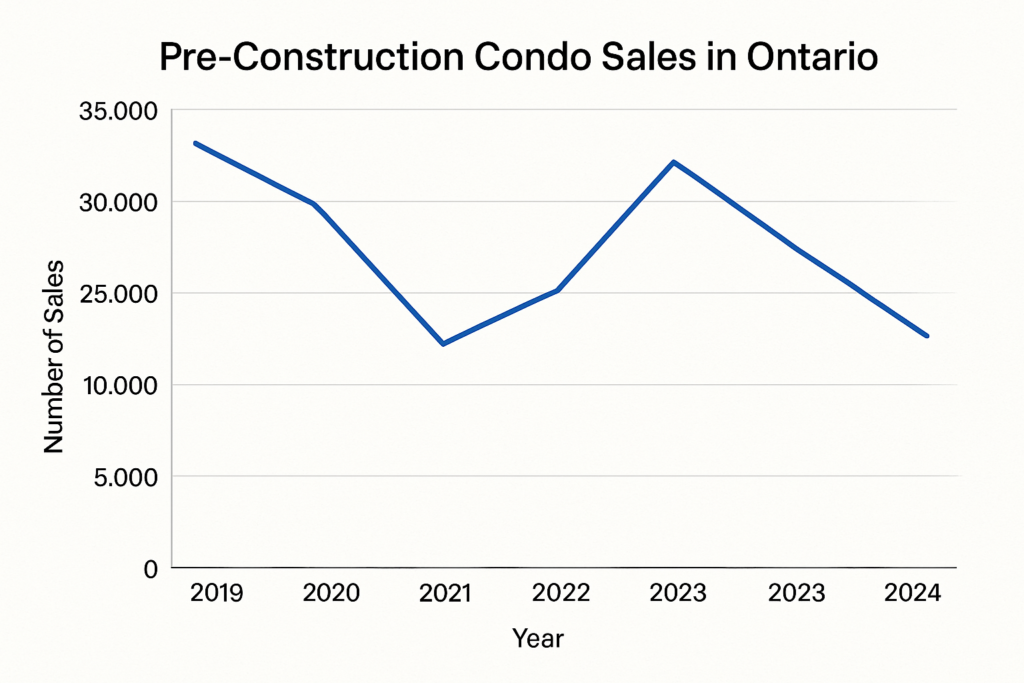The spring housing market in Ontario is traditionally a bustling period, but in 2025, it’s experiencing an unusual slowdown. Despite multiple interest rate cuts by the Bank of Canada, the market remains tepid. Let’s delve into the factors contributing to this deceleration.

1. Economic Uncertainty Dampens Buyer Confidence
Ontario’s economy is grappling with challenges stemming from a trade war initiated by the U.S., leading to increased tariffs on Canadian exports. This has heightened economic uncertainty, particularly in Ontario’s export-reliant sectors, causing potential buyers to hesitate due to concerns over job security and income stability.
2. Affordability Remains a Significant Barrier
Even with reduced interest rates, housing affordability in Ontario remains strained. Home prices have surged nearly 100% over the past decade, outpacing income growth and making homeownership elusive for many. Desjardins Securities projects that affordability may not return to pre-pandemic levels for at least two more years.
3. Surge in Inventory Leading to a Buyer’s Market
The province is witnessing a significant increase in housing inventory, with levels not seen in over a decade for January. This surge, attributed to new developments and investors offloading properties, has shifted the market dynamics. The sales-to-new-listings ratio in January 2025 was just 34%, firmly placing Ontario in a buyer’s market.
4. Reduced Immigration Slowing Demand
Immigration has historically been a key driver of housing demand in Ontario. However, recent cuts to immigration targets, partly due to infrastructure and affordability concerns, are expected to slow population growth and, consequently, housing demand.
5. Shift in Market Psychology
The long-held belief that real estate prices always rise is being challenged. The recent market downturn has altered buyer sentiment, with many adopting a wait-and-see approach, further slowing market activity.
6. High Development Charges and Approval Delays
Ontario’s housing supply is also hampered by high development charges and prolonged approval processes. These factors inflate construction costs and delay new housing projects, limiting supply and keeping prices elevated.
7. Stagnation in Pre-Construction Condo Sales
Pre-construction condominium sales, particularly in Toronto, have stalled. This slowdown is due to high mortgage costs, uncertain market conditions, and reduced investor interest, leading to fewer new construction projects and exacerbating the supply-demand mismatch.

Conclusion
The Ontario housing market’s sluggishness in spring 2025 is the result of a confluence of factors: economic uncertainty, persistent affordability issues, increased inventory, reduced immigration, changing buyer psychology, regulatory hurdles, and a slowdown in new construction. While lower interest rates provide some relief, they are insufficient to counteract these challenges fully. Prospective buyers and sellers should remain informed and adaptable as the market continues to evolve.
If you’re feeling stuck in today’s sluggish market, now is the perfect time to consider selling your home to SLG Home Buyer. We buy homes in any condition, without the hassle of showings, agent fees, or long wait times. While the traditional spring market is slow, our process is fast, direct, and stress-free—giving you a reliable option in an unpredictable time. Whether you’re downsizing, relocating, or simply ready to move on, SLG Home Buyer is here to make the transition easy.

